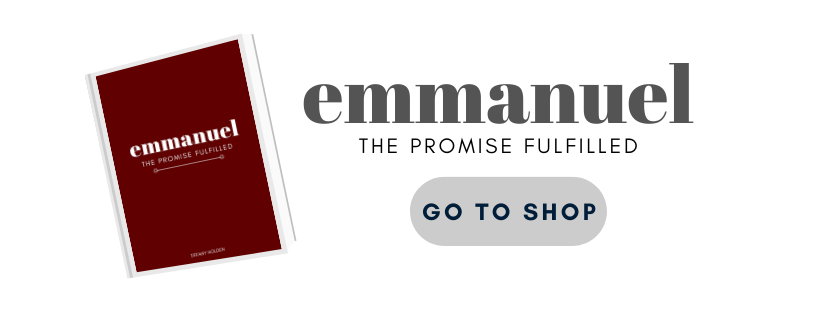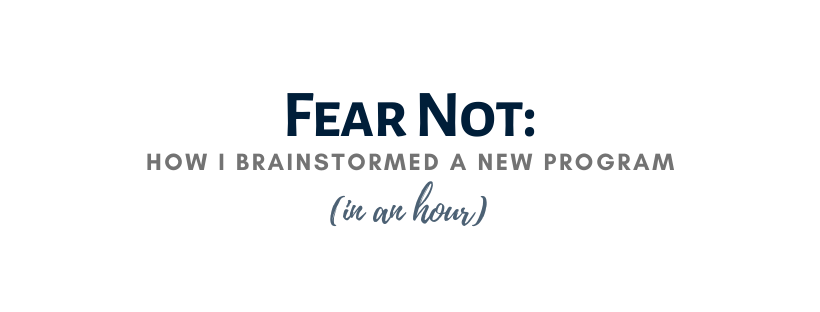
15 Concepts
Here’s where I give you tons of ideas for themes and concepts for writing a Christmas program script. You can pick one, mix and match, or overlap as many as you want.
Tell the Christmas story as told in Matthew and Luke.
- Tell the story. It’s a key chapter in the greatest story ever told. Use lighting, readings, costumes, monologues, music, congregational singing to bring the chronological telling to life.
- Or do a hymn sing-type informal evening where traditional carols are lined up roughly in chronological order (break them up into individual verses) and get the congregation involved. Have narrators break up the singing with readings from Matthew, Luke and John.
Tell the story from the perspective of one of the participants.
What could we learn about the Christmas story through the lens of Mary’s experience? Or Joseph’s? What fears would they have had to face, and what trust in God would they have needed to live out God’s call in their lives? We can learn much about our weakness, frailty and inadequacy and how it contrasts with our Savior’s strength, power, and righteousness.
This could be built around songs or as a series of monologues – similar to the structure of this script about Queen Esther.
Put the Christmas story in context: Creation to the Cross, to Christ’s return.
I’m a huge context person. Christmas is a magnificent event, but just one in a series of events in God’s magnificent plan for the world. What does “Emmanuel, God with us” mean without the separation of the Fall? What is the impact of the coming of Christ without centuries of layered prophecies that all came true in the birth, ministry and death of Jesus? There’s a way to give the Christmas story center stage while lighting it up with the floodlights of the other enormous events in the calendar of human history.
Focus on one doctrinal truth.
Highlight one aspect of God’s character or the Gospel, and view the Christmas story through that lens. If people walked away with one piece of truth about God’s character, what would you want to convey? What can we learn about God’s faithfulness through the Christmas story? Or His mercy? Or His grace?
Pick one, two or three aspects of Christ’s nature to highlight.
In my first Christmas production, we looked at the themes of Christ as God, as King, and as Savior (we also matched them up to the Magi’s gifts of frankincense, gold, and myrrh for a symbolic parallelism).
Trace one theme through history.
In my 2018 program, I took the theme of Emmanuel: God with Us and asked myself, “what does Emmanuel mean for us today? How about in the future? Is Emmanuel limited to Isaiah’s prophecy and the Gospels’ fulfillment, or is there more?”
The sections of the program were:
The Need for Emmanuel – the Fall and man’s separation from God
The God Who Promised Emmanuel – God’s holy nature and incredible grace
Emmanuel: God With Us – God coming to earth; His birth and death
The Victory of Emmanuel – The resurrection of Jesus
Emmanuel: The Eternal Promise – Jesus’ promise to sustain us now and return later)
**Side Note: I’m sure some of you are thinking: is this still even a Christmas program? It’s all about how you produce it. In the above program, we interspersed the speaking parts with multiple special numbers that were distinctly Christmassy, and each speaker’s section was preluded with a stanza of “O Come, O Come, Emmanuel” that matched their theme. Every music and stylistic choice was strongly anchored in Christmas culture, but more importantly, in the meaning of Christmas.

Trace Old Testament prophecies that were fulfilled in the birth, ministry, death and resurrection of Jesus.
Look at the lists of prophecies, types and foreshadowings of Christ’s coming, and the mathematical incredulity of all of those being fulfilled by one man. Consider too, the disparity of the writers of said prophecies, and even the apparent conflicts of those prophecies: How could Isaiah write both that the government would be upon His shoulders, and His name would be Mighty God, and also that He would be a Man of Sorrows, lonely and rejected? One prophet predicts a Ruler making His enemies a footstool for His feet; another prophesies a Prince of Peace. In one passage we see a King in the line of David, in another a sacrificial lamb.
These prophecies were written in different languages, by men of different sects and stations, in different eras and during the reigns of different political empires. There is much here to invoke a sense of awe, wonder, and most importantly, worship.
Create a fictional character who could have been in Bethlehem.
What lessons can we learn from the unknown innkeeper who turned away Mary and Joseph? Could a children’s Christmas program be built around the theme of the “Little Drummer Boy?”
Use elements of Christmas tradition as an outline.
For example, Advent candles. For some, the four candles on an Advent wreath represent hope, love, joy and peace. Could you explain how the coming of Christ at Christmas brought each of these to earth in a new way? Or if you look at these from a chronological/historical perspective, think of the
- The hope of the Israelites as they looked forward to a Messiah
- The love of the Trinity to send the Son to earth to die for our sins
- The joy of the Resurrection
- The promise of peace on earth when the Son returns once again.
At my church, the Advent candles represent
- Prophecy (the time)
- Bethlehem (the place)
- Shepherds (the witnesses)
- Magi (witnesses again)
Or what about Christmas trees? Legend has it Martin Luther was one of the early proponents of decorating trees at Christmastime. What about the other trees that are mentioned at key points in the Biblical story? The Tree of knowledge of good and evil in Eden, the tree that Christ hung on, and the tree mentioned in Revelation.
Structure around a classic Christmas hymn
I did this for both We Have Seen His Star in the East and Emmanuel: the Promise Fulfilled. (Stay tuned: additional how-to posts forthcoming!!)
Reactions to Christ’s coming: then and now
Who reacted in praise and worship? Who reacted in sin? Who trusted God, and who rebelled? How should we respond 2000 years later? Also, how should this inform our anticipation of His Second Coming?
Explore different names of Christ.
Christ’s names often come in pairs or groups; our God is majestic and complex. What can we learn of Him by His names Alpha & Omega, or Wonderful, Counsellor, Mighty God, Everlasting Father, Prince of Peace? What does it mean that He is both the Lion of Judah and Lamb of God?
*It’s fairly easy to find songs that reference various names of God, especially those found in Isaiah 9, like as Handel’s Messiah “For Unto Us a Child is Born”, or “For Unto Us” by Point of Grace, or “Unto Us” by Matthew West, or “Unto Us” by Aaron Shust.
Take a classic Christmas phrase (from the Biblical text or a Christmas song) and break down/expand upon its meaning:
- Let There Be Light
- Prepare Him Room
- We Have Seen His Star in the East
- No Room in the Inn
- Glad Tidings of Great Joy
- Glory to God in the Highest
- A Thrill of Hope
- Peace on Earth
- Fear Not

Focus on one Biblical Advent text that’s not the specific Christmas story recorded in Matthew or Luke.
- John 1 (“And the Word became flesh and dwelt among us…”)
- Philippians 2 (“Who being very nature God…made Himself nothing”)
- Isaiah 9 (“For to us a child is born, to us a son is given.”)
Follow the bloodlines of Christ’s ancestry.
Christ had a biological human mother and an adoptive human father. Trace how the virgin birth maintained his human right to kingship as a son of David while avoiding the curse in his paternal line.
In Hebrew culture, adopted children were heirs just as much as biological children (and look how that ties into the analogy Paul uses in the Gospels about the family of God!) Jews kept strong, detailed family records – this was one of the cultural activities when they would make the trek to Jerusalem for Passover or other feasts – and as soon as Jesus claimed to be Messiah, his other enemies could go back through the records of His ancestry and trace the line back to David. Trace the curse in the line of Joseph (a curse follows bloodlines).
50 (well, 45 actually) Components
Here’s a brainstorm list of tactics that you can mix and match throughout your program. Think about how different combinations of sights and sounds creates different effects or moods. What groupings will increase the pace or intensity? What can you do to emphasize a particular moment?
17 Ways to Use Audio & Music
- Instrumental background music (piano, violin, CD, YouTube, etc.)
- Background sound effects (crowd yelling, baby crying, barn sounds, hooves., etc)
- Instrumental backdrop to speakers (Scripture, monologues, narration, etc.)
- Congregational singing
- Small group/ensemble pieces (all-men, all-women, blend, etc.)
- Solo singers
- Solo instrumentalists
- Band/orchestra/ensemble instrumentalists
- Choir/large singing group
- Rewriting sections of well-known song lyrics to better fit the theme
- A cappella singing
- Progressive, powerful build-up of the music throughout the stanzas of the song
- Sudden cut in background music (strong highlight to the lyrics sung immediately after)
- Use of ancient languages such as Latin or Hebrew
- Musical key change
- Humming or “oohs” as background music
- Switching a well known song from minor to major (or vice versa) for effect
5 Storytelling Elements
- Narration
- Character dialogue
- Character internal monologue
- Layered character monologues (they’re each giving a monologue as if alone, but it’s split up in sections so the audiences hears one part, then the next is from the other person, etc.)
- Acting in character
8 Speaking Techniques
- Speakers prepare short sections (perq: you give them the vision and guidelines but don’t have to write the whole script)
- Keynote speaker (similar to a Sunday service, with a main message and everything else is built around it)
- Read from a script
- Memorized lines
- Read from offstage/voiceover
- Speaking in unison
- Overlapping speaking/interruptions for effect
- Readings down the line of participants
7 Ways to Present Scripture
- Scripture readings
- Scripture read over music backdrop
- A song version of a Scripture passage
- Recited in unison
- Recitation by memory
- Recitation in multiple languages
- Recitation in a foreign/ancient language while the common language is projected on the screen
16 Visual Components
- Dimmed lights throughout
- Changing lights to match mood
- Uplighting that changes color
- Complete darkness
- Use of Christmas lights/church decor
- Words projected on backdrops (PowerPoint/Prezi/Proclaim, etc)
- Silent video on screen backdrops
- Costumes/dress code
- Set pieces (stable, manger, star, etc)
- Stage arrangement
- Candles and the lighting of candles
- Printed lyrics for an instrumental piece
- Blocking (how/where people stand/move on the platform)
- Choreographed entrances and exits (are participants on stage the whole time or is there meaning to the ons and offs?)
- Dramatic entrances & exits
- Participants’ manner (serious and sober, joyful but reserved, worshipful and free?)
Where to go from here:


